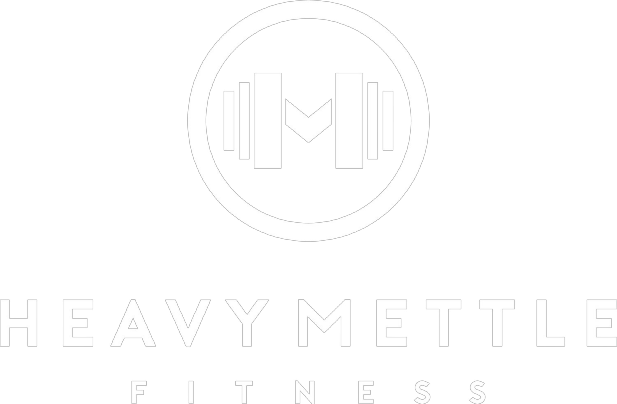Hypertrophy Vs Strength Training: Understanding the Differences
When designing a weight training program or regimen, clearly defining your goals is critical. Whether it's strength, hypertrophy, or a combination of the two, it's important to understand the nuances between hypertrophy versus strength training and the optimal methodologies to facilitate the accomplishment of both of these goals.
Hypertrophy refers to the process of increasing muscle mass and volume, while strength training focuses on enhancing the ability to exert force. While strength and muscle size are often correlated, strength optimization and hypertrophy optimization typically require different modes of training.
This article delves into the key differences between the strength training versus hypertrophy methodologies through the exploration of their unique benefits, programming techniques, and how they can be integrated into a well-rounded fitness regimen. Whether you aim to bulk up, improve your power, or strike a balance between the two, grasping the fundamentals of hypertrophy versus strength training will equip you with the knowledge to tailor your workouts appropriately to meet your specific ambitions. If you’re seeking additional help or guidance from someone with an expertise in fitness, consider hiring a personal trainer to help with the achievement of your goals!
What is Hypertrophy Training?
Hypertrophy training is a form of exercise designed specifically to increase muscle size. This type of training focuses on creating mechanical tension and metabolic stress within the muscles, which stimulates muscle fibers to grow larger over time. The primary mechanism behind hypertrophy involves progressive overload, where the weight or resistance used in specific exercises is gradually increased to continually challenge the muscles. Typically, hypertrophy training includes moderate to high repetitions (8-12 reps) and multiple sets per exercise, with shorter rest intervals compared to strength training.
It's important to note that in recent years scientific literature has challenged the traditional thinking that a specific rep range is needed in order to facilitate and promote muscle growth. Studies have shown that the total volume of resistance training done within a specified time period is the major determining factor for muscle growth as opposed to training with a very specific rep scheme.
Volume in the context of resistance training refers to the weight used, repitions and sets completed, along with the overall intensity of a weight training session. Manipulating these variables enables someone to increase or decrease training volume. It's also important to note that training to or near to failure will better promote muscle growth as well (this falls under the categories of intensity).
Objectives and Goals of Hypertrophy Training
The main objective of hypertrophy training is muscle growth, also known as muscle hypertrophy. This kind of training is often employed by bodybuilders, athletes, and fitness enthusiasts who aim to improve their physical appearance by enhancing overall muscle development. Beyond aesthetics, hypertrophy training can also contribute to improved muscular endurance and overall body composition. The goals are to increase muscle fiber cross-sectional area, enhance muscle definition, and achieve a balanced and proportional physique. Additionally, hypertrophy training can support joint, ligament, and bone health and aid in boosting metabolism by increasing lean muscle mass.
Examples of Hypertrophy Exercises
Almost any exercise can be considered a hypertrophy exercise if there is a safe and affective means of inorporating progressive overload. With that said, listed below are some more traditional and popular exercises incorporated by many who target hypertrophy with their resistance training programs.
Squats: A foundational lower-body exercise that targets the quadriceps, hamstrings, glutes, calves, and even lower back.
Bench Press: A classic upper-body movement focusing on the chest, shoulders, and triceps.
Deadlifts: A comprehensive exercise that works the back, glutes, hamstrings, and core.
Barbell Rows: Effective for building the muscles of the upper back and lats.
Bicep Curls: An isolation exercise that targets the biceps for increased arm size.
Tricep Extensions: Focuses on the triceps to build muscle mass in the upper arms.
Incorporating a variety of exercises and resistance (free weights, cables, machines, bands, etc.) into a structured workout plan, combined with proper nutrition and adequate recovery, can effectively stimulate muscle growth and help someone achieve their hypertrophy-oriented goals.
What is Strength Training?
Strength training, also known as resistance or weight training, is a type of physical exercise that focuses on improving the ability to exert force. Unlike hypertrophy training, which aims to increase muscle size, strength training primarily targets the development of strength and power. This type of training often involves lifting heavier weights with lower repetitions (typically 1-6 reps) and longer rest periods between sets to allow for full recovery and optimal performance.
It's important to understand that strength training can also be a generic reference to weight training, therefore anyone looking to improve their overall strength, and isn't necessarily concerned with maximizing power or performance, can be engaged in a form of strength training. As such, strength training can theoretically incorporate almost any rep range, and it's not restricted to 1-6 reps.
Objectives and Goals of Strength Training
The primary objective of strength training is to increase muscular strength and power. This form of training is essential for athletes who require high levels of strength for their sport, such as powerlifters, football players, wrestlers, and many more!
Beyond athletic performance, strength training is also beneficial for most people as it can improve aspects of everyday life. This includes improving the ability to perform certain tasks and movements and reducing the risk of injury by strengthening muscles, ligaments, and tendons. Additional benefits of strength training include enhancing bone density, promoting metabolic health, and supporting overall physical resilience. By focusing on enhancing strength through resistance training, individuals can improve their capacity for other forms of exercise, including hypertrophy and endurance training.
Examples of Strength Exercises
Similar to hypertrophy training, strength training mainly refers to a form of resistance training rather than a selection of exercises. Some "strength" exercises will even overlap with "hypertrophy" exercises. These exercises often include compound movements that engage multiple joints and muscle groups, allowing for the lifting of heavier weights and greater overall strength development. Some common examples of strength exercises include:
Deadlifts: A fundamental exercise that targets the entire posterior chain, including the back, glutes, hamstrings, and core.
Squats: Essential for building lower body strength, focusing on the quadriceps, hamstrings, glutes, calves, and back.
Bench Press: A primary upper-body exercise aimed at increasing the strength of the chest, shoulders, and triceps.
Overhead Press: Targets the shoulders and upper arms, critical for developing pressing strength.
Pull-Ups/Chin-Ups: Bodyweight exercises that build strength in the back, biceps, and forearms.
Barbell Rows: Focuses on strengthening the muscles of the upper back and lats.
Participating in a well-structured strength training program, along with a focus on progression and proper technique, can lead to significant improvements in overall strength and functional capacity.
Key Differences Between Hypertrophy and Strength Training
While hypertrophy and strength training share common ground in their use of resistance exercises, they're distinct in their primary objectives and methodologies. Hypertrophy training focuses on increasing muscle size by causing muscle fibers to grow larger through moderate weights and higher repetition ranges, traditionally. In contrast, strength training (when trying to maximize absolute strength and power potential) prioritizes enhancing the muscle's ability to produce maximal force, utilizing lower repetitions with heavier weights. These distinct goals influence various aspects of each approach, including exercise selection (sometimes), programming, and overall strategy.
Training Frequency and Volume
In hypertrophy training, higher training frequency and volume are integral for stimulating muscle growth. Typically, individuals aiming for hypertrophy might train each muscle group 2-3 times per week to ensure sufficient stimulus and recovery. The volume is generally higher, involving multiple sets (3-5) of moderate repetitions (8-12) per exercise.
Conversely, strength training often involves lower frequency and volume, focusing on maximizing performance and recovery. Strength athletes might train each muscle group 1-2 times per week, with fewer sets (2-4) but with heavier weights to target neuromuscular adaptations necessary for strength gains.
However, with respect to both of these training methodologies, the more experience someone has with their weight training, the more volume that will be required to continue seeing consistent progress.
Repetition Ranges and Intensity
The repetition ranges and intensity often differ with hypertrophy versus strength training. For hypertrophy, the traditional (but not always necessary as described earlier) rep range is typically between 8 to 12 repetitions per set, using weights that are around 60-80% of the lifter's one-repetition maximum (1RM). This range balances mechanical tension and metabolic stress, both of which are essential for muscle growth.
Strength training employs lower repetition ranges, usually 1 to 6 reps per set, with weights that are 85-100% of the lifter's 1RM. This intensity is designed to recruit maximal muscle fibers and improve the neural pathways involved in force production.
With both of these modes of weight training, getting to or close to failure within each set is an essential aspect of maximizing progress, as doing so enables the lifter to recruit maximal muscle fibers, which will better promote gains in strength and size.
Rest Periods
Rest periods between sets also vary substantially between hypertrophy and strength training. In hypertrophy training, shorter rest intervals ranging from 30 to 90 seconds are a common practice. These shorter breaks help maintain muscle tension and metabolic build-up, essential components for muscle growth.
In contrast, strength training necessitates longer rest periods, typically between 2 to 5 minutes, to allow for adequate recovery of the muscles and nervous system enabling the lifter to utilize the maximum amount of weight lifted in each set and session.
Understanding these nuances enables individuals to design a training program that better aligns with their specific fitness goals.
Benefits of Hypertrophy Training vs Strength Training
Muscle Size and Appearance
Hypertrophy training is intended to increase muscle size, leading to a more muscular and defined appearance when done sufficiently. The primary benefit of this type of training is the enhancement of muscle aesthetics, making it a popular choice among bodybuilders and fitness enthusiasts who prioritize visual changes in their physique. While hypertrophic training regimens may prioritize the enhancement of muscle size and volume, many of the benefits that come with a generic "strength training" routine are often enjoyed by those who prioritize hypertrophy.
Conversely, while a strength training routine may not necessarily prioritize muscle mass enhancement, it can still contribute to increased muscle mass, particularly for beginners or those new to resistance training. However, the gains in muscle size are generally more modest compared to hypertrophy training. Strength training's emphasis on lifting heavier weights is primarily intended to improve strength and performance with the specific movements that are incorporated in a particular routine.
Functional Benefits and Performance
In terms of functional benefits, strength training supersedes a more hyper-focused hypertrophy routine by significantly improving an individual's ability to exert force. This makes day-to-day activities easier and enhances performance in sports and other physical endeavors. Athletes, in particular, benefit from strength training as it translates into better performance metrics such as sprint speed, jump height, and overall power output (provided someone's routine is incorporating similar movements into their workout routine as those movements they'd be executing in their respective sport). The neural adaptations from strength training improve coordination, stability, and efficiency in movement, which are critical for athletic performance and injury prevention.
While a strength training approach to weight lifting may provide benefits that translate better into a "functional" scenario, hypertrophy training also offers functional benefits. Increased muscle mass can enhance endurance and work capacity by supporting prolonged physical activity with less fatigue. Additionally, hypertrophy training contributes to joint health and stability by strengthening the surrounding muscles, thus providing better support and reducing the risk of injuries. Plus, many of the benefits to bone and ligament health often seen with strength training are also seen with a hypertrophy program. However, the direct impact on maximal force production is less pronounced than with strength training.
Health and Fitness Advantages
Hypertrophy training, through increasing muscle mass, has a significant impact on metabolism. More muscle mass raises the basal metabolic rate (BMR), helping individuals burn more calories at rest and thus, potentially aiding in weight management. It may also improve insulin sensitivity, which can reduce the risk of developing type 2 diabetes. In addition to many of the fantastic health benefits of a hypertrophy regimen, the aesthetic improvements can boost self-esteem and body image, contributing positively to mental health.
Strength training offers substantial benefits for overall physical resilience and longevity. It enhances bone density, reducing the risk of osteoporosis, especially in older adults. The improvements in neuromuscular function support better balance, coordination, and mobility, which are crucial for maintaining independence with aging. Strength training also contributes to cardiovascular health by improving blood pressure and cholesterol levels when combined with aerobic exercise. Note that these benefits are also found with a hypertrophic-oriented weight training regimen.
Combining Strength and Hypertrophy Training
It's possible and often beneficial to incorporate a hypertrophy and strength approach to resistance training within an exercise regimen. Since hypertrophy isn't solely reliant on a specific rep scheme (as previously discussed in this article), we can leverage a strength-oriented rep scheme to contribute to gains in muscle size through the completion of more sets with lower reps (heavier weight). In doing so, we're able to optimize strength while working towards building more muscle mass. As a certified personal trainer with a background in natural bodybuilding, this is an approach I've taken with my personal fitness regimen over the years, and I've seen consistent progress with my physique and strength in doing so.
As described above, the most efficient way to incorporate both of these methodologies into a training routine is to incorporate exercises with which the intent is to lift heavier weights for fewer repetitions (ranging from 1-6 reps) for a greater number of sets (ranging from 5-8 depending on how many reps are completed in each set). The rule of thumb is to typically include more sets of an exercise with fewer reps performed in each set so that the volume of load and stimulus is sufficient to produce gains in muscle mass. Total volume with respect to resistance training is the key factor, along with a healthy nutrition regimen, for optimizing gains in muscle mass.
Understanding Hypertrophy and Strength Training
While hypertrophy and strength training are often two distinct approaches to resistance training, they can also serve as complimentary modes of weight training; each contributing to the progression of the other with a properly designed and executed regimen.
Hypertrophy training generally focuses on muscle size and aesthetics, utilizing moderate weights and higher repetition ranges to stimulate muscle growth. Strength training, on the other hand, prioritizes maximizing force production, employing heavier weights and lower repetitions to enhance overall strength and power.
It's important to note that strength training can also be a more generic reference to weight training with the intention of enhancing strength in a more functional capacity rather than optimizing athletic performance and output.
Understanding the key differences and benefits of these training styles allows for the optimization of fitness programs to better align with someone's specific goals, whether it be achieving a more muscular physique, improving athletic performance, or enhancing functional strength for daily activities. Remember that by integrating elements of both hypertrophy and strength training, one can create a well-rounded workout regimen that promotes balanced development, reduces the risk of plateaus, and supports long-term health and fitness.
Ultimately, the decision to focus more on hypertrophy or strength training (or a combination of both) depends on personal preferences and objectives. With informed program design and implementation, it's possible to effectively harness the power of both training modalities to achieve desired outcomes and maintain a versatile and resilient physique.
Please note that I am not a medical professional and you should always consult with your doctor before beginning an exercise and/or nutrition regimen.






